Pathways to Innovation
Smart Sound Plymouth provides access to world-renowned, award-winning marine science and technology expertise. Offshore testing is complemented by onshore facilities, including state-of-the-art laboratories and testing environments for small to large items of equipment.
The team is experienced in working with commercial organisations and on confidential projects, whilst working to time and budget. Specialist support in advanced materials and manufacturing is complemented by a suite of laboratories for electronics, fabrication, materials, structures, and thermodynamics & fluid dynamics.
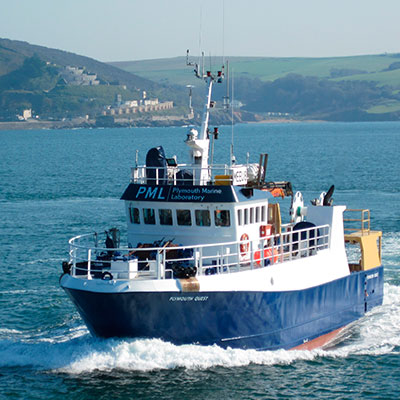
PML Plymouth Quest
The Plymouth Quest is able to operate in coastal and offshore regions and is able to spend up to 5 days at sea. It is equipped with facilities for collecting a wide range of biological, chemical and physical measurements and boasts a suite of underway sensors for autonomous measurements.
- Length: 21.5m, draught: 3.02m
- Maritime and Coastguard Agency Category 2 workboat, able to operate up to 60 miles from a safe haven
- Capacity of 12 passengers plus crew during the day or 6 overnight berths
- Equipped with trawl and sweeping winches, an A frame, net drum, 10 tonne hydraulic crane and hydraulic stern gate
- Sea-Bird scientific rosette sampler with twelve 10L bottles and CTD instrumentation package. Third party sensors can be integrated into this water column profiling system.
- Sophisticated underway sensing system with additional capacity for third party sensor trials. The system is fed through a dedicated seawater intake system, which protrudes 1m below the vessels hull.
- 10,000L pristine seawater collection and holding tanks.
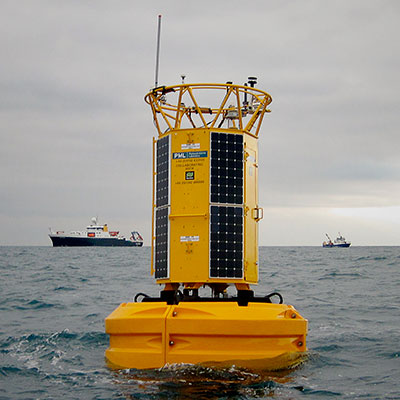
E1 Data Buoy
The E1 station is located at the far south west extent of the Smart Sound Plymouth, some 20 nautical miles south of Plymouth. The E1 buoy is permanently moored at this station in a nominal water depth of 75m. This buoy is provided through a collaboration between the Met Office and the Plymouth Marine Laboratory. The in-water measurements include: sea surface temperature, salinity, oxygen, turbidity, fluorescence (WetLabs WQM)); CDOM fluorescence (WetLabs); nitrate (Satlantic Suna) and a PAR sensor (Satlantic). Whilst the above water met station and wave sensor is operated by the Met Office. Both systems report to shore hourly using Iridium Short Data Burst format and is digested into the Met Office forecasting models as well as hosted on the Western Channel Observatory website.
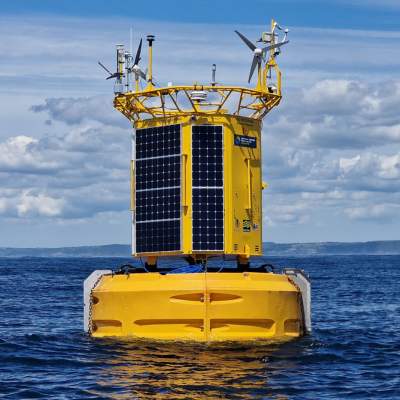
L4 Data Buoy
The L4 station is approximately 6 nautical miles south of Plymouth in 45m of water. The L4 buoy is equipped with an array of sensors to look at both atmospheric and marine parameters. These include sea surface temperature, salinity, oxygen, turbidity, fluorescence (WetLabs WQM); CDOM fluorescence (WetLabs); nitrate (Satlantic ISUS); pH (Satlantic SeaFET) and a hyperspectral radiometer (Satlantic). A met station is provided by the Met Office. This platform has been designed to easily integrate third party sensors, either for scientific campaigns or for the development of new marine technologies. Plymouth Marine Laboratory has a proven track record of hosting a diverse range of prototype technologies on this platform and regularly trials and validates new sensor technologies from the National Oceanography Centre.
Through the Marine Business Technology Centre (MBTC) this buoy platform will shortly be replaced with a larger buoy with high speed communications, plug and play capability for third party sensors and prototype technologies. A significant enhancement will be the addition of an autonomous water column profiling capability, a first of its kind in UK waters.
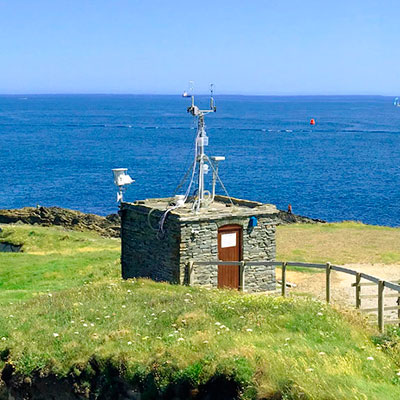
Penlee Point Atmospheric Observatory
The Observatory forms part of the Western Channel Observatory, it takes continuous measurements of several gases in the air including concentrations of sulphur dioxide, ozone, carbon dioxide and methane, as well as aerosols, trace metals and organics. The PPAO facilitates quantification of air-sea gas transport by using state-of-the-art eddy covariance techniques; it is very suitable for long-term, high temporal resolution measurements of air-sea exchange in shelf regions. Additionally the PPAO has proven very useful in testing and comparing instruments designed to measure fluxes of carbon dioxide and methane terrestrially and assess their suitability for use in obtaining air-sea flux measurements.

Unmanned Surface Vessel – CETUS
The L3 Harris C-worker 4m uncrewed surface vessel is a diesel powered USV designed to complete a variety of offshore and inshore survey tasks; housed in the University of Plymouth’s Marine Station waterside campus. C-Worker 4’s waterjet propulsion system makes it an ideal solution for shallow water survey. The vehicle has the ability to integrate a range of standard survey payloads including ADCP, USBL, PAM and CTD. The vessel is capable of conducting a variety of mission trials with both wet and dry payload bays, Underwater Retractable Mast (URM), water column profiling sensor winch and the ability to tow sensor packages. The vessel also comes with the Robot Operating System (ROS) interface, which facilitates the trails of third party guidance/mission control software. All missions will be designed and conducted by a professional team ensuring that all safety and authorisation procedures have been followed. Integration of trial systems into the vessel will be facilitated by specialist software and fabrication engineers.
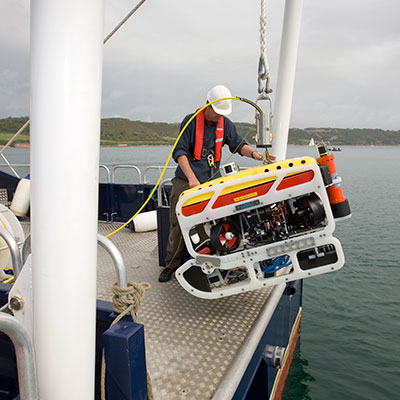
SAAB SEAEYE FALCON ROV
This custom made version of the Saab Seaeye Falcon was originally equipped to a high
specification, it includes:
- TRITECH obstacle avoidance sonar
- 4 LED lights
- SEAEYE colour video camera
- HDTV Camera mounted on skid
- Skid Mounted Five Function Hydraulic Manipulator System
- Valeport Modus CTD sensor
- Link Quest USBL system.
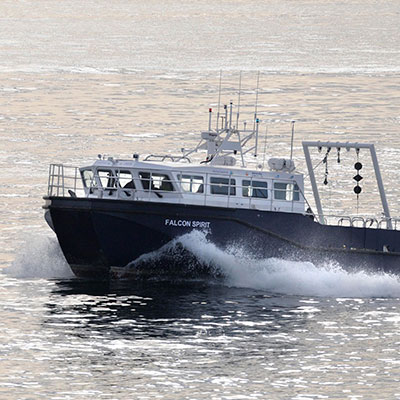
RV Falcon Spirit
The RV Falcon Spirit is a flexible and state-of-the-art platform for marine research,
including:
- 13.65m aluminium catamaran survey vessel.
- coded for 14 people to work up to 60 miles from safe haven.
- beam of 6 metres; offers a large and stable 25m of flood lit configurable aft deck space.
- Internal dry laboratory space for a minimum of 6 workstations.
- separate wet laboratory facility.
- pair of 500 horse power diesel engines the vessel, capable of a 165 mile range at a 15 knot service speed, with considerable power in reserve.
- capability to troll at very slow speeds.
- 1×1 metre moon pool.
- 2x independent 600kg hydraulic capstans.
- 400kg pot hauler in way of a double door in the starboard bulwark.
- Power is via an independent generator producing 12.3 kVa of clean power to a
- multitude of 240V sockets, a 1.6kw inverter and a 4kw UPS.
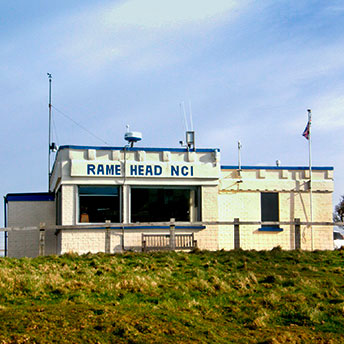
Rame Head Communications and Met Station
The National Coastwatch station on the Rame Head peninsula acts as an ideal platform for offshore communications and meteorological observations. The communication system provides the gateway for the real time transmission of numerous sensor platforms across the Smart Sound.
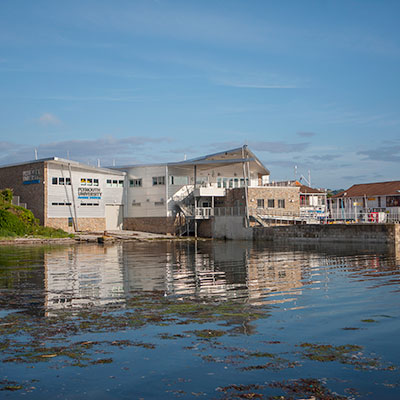
University of Plymouth Marine Station
The Marine Station is a landmark £4.65 million development which serves as the base for marine expeditionary work. Located on the shores of Plymouth Sound as part of University of Plymouth’s ‘Waterfront Campus’, the facility features:
- Expeditionary base of operations
- Water access from pontoons, lifts & slips
- Equipment storage
- Lecture facilities overlooking the sea
- A wet lab for sample examination and analysis
- A seawater aquarium
- Diver changing facilities